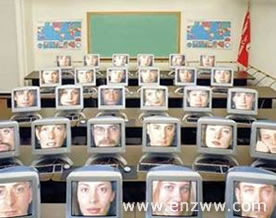The synthetic mode of thinking holds sway in Chinese culture. People are accustomed to observing and judging things as an enclosed whole. Analysis is not rejected, but synthesis predominates. There was no encyclopedia of the Western kind in ancient China. Leishu, a kind of reference book that comes closest to an encyclopedia, is a set of political, social, and ethical data dealt with in a circular way with “emperor” as the center. It does not take into account the essential nature of the included items and their fundamental differences. When writing an article, a classical writer would attach great importance to the unity and harmony of the whole piece, giving much attention to the correspondence between introduction and conclusion and the natural transition from one point to another, rather than the clear-cut division between different sections.
A doctor of Chinese medicine diagnoses a patient’s disease by first looking at the patient’s complexion and tongue for its coating, feeling the pulse and eliciting complaints, in order to form a correct judgment of the patient’s general physical condition. The Chinese doctor tries to get at the root of the trouble and effect a permanent cure rather than apply a palliative remedy. Incidentally, Chinese people eat an apple by peeling it around and reserving the whole before biting, whereas Westerners tend to divide the apple into parts.
好学英文网
© 2021-现在 好学英文网 软著登记号:2025SR2204462 湘ICP备2022000939号|













